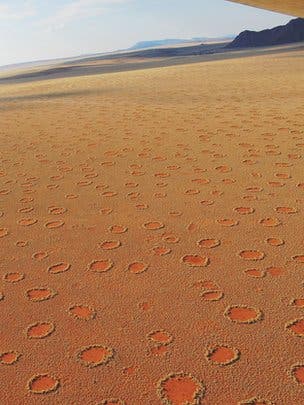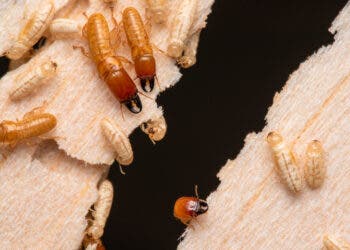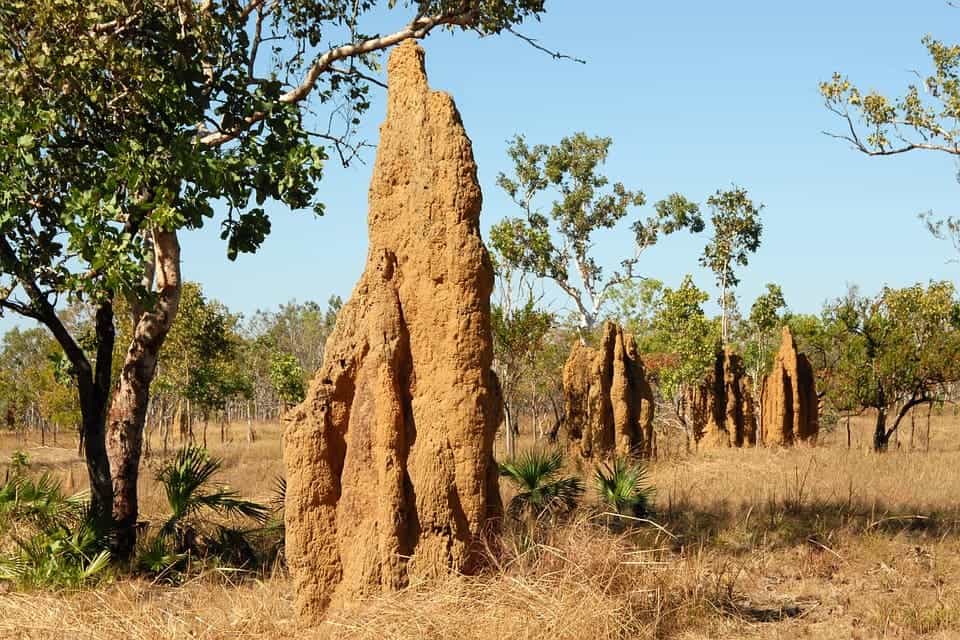A while ago, we wrote about the ongoing efforts to pinpoint the cause that gives rise to the thousands of so called “fairy circles” scattered around hundreds of square miles from the edge of the Namib Desert in Angola to South Africa. These great rings of grass that cover whole patches of arid desert have intrigued scholars for years, especially westerners for which the phenomenon was seen as unique. What was perplexing, however, was finding what causes them and strangely enough the fairy circle roots has alluded researchers until recently when German scientists at the University of Hamburg finally cracked the puzzle: they’re caused by termites.

As reported earlier, termites were considered the prime candidates for the beginning as the main driving factor of these peculiar, yet the enchanting circles etched through the barren desert have concealed the invertebrates until now. Other researchers have proposed in the past poisonous plants, ants, and even toxic gases rising from below as possible explanations.
Hundreds of such circles in the Namibian desert were analyzed by the team of researchers led by Professor Norbert Juergens, with some extremely interesting findings to boast. For one, it’s important to note that these so called fairy circles are veritable mini-oases right in the middle of the desert, essentially trapping rain water. The sandy earth surrounded by the vegetation rings collects the water below the surface where it remains since it doesn’t get lost through plant perspiration.
This way, the rings, which the termites engineer themselves first by clearing patches of ground by eating the roots of short-lived, annual grasses, sustain and provide essential nourishment for their creators. Moreover, these circles have been found to be part of the ecosystem chain, since the termites themselves that call these circles home become food for geckos, moles, aardvarks, jackals, spiders, ants and the like.
Thought beavers were nature’s prime engineers? Well, Professor Juergens, maybe a bit subjective if you ask me, holds the Psammotermes allocerus termites as the greatest ecosystem engineers.
“We all admire the beaver for the way it can turn a linear river into a lake with a dam, but the termites turning the desert into a pattern of oases that allow permanent life even in drought periods for hundreds of years – that’s much more fascinating,” he said.
“What is more, these termites do it on a large scale – over hundreds of square kilometres. They should replace the beaver as the text-book engineer.”
It’s worth noting that fairy circles aren’t restricted to vegetation rings in the desert, since they’ve also been spotted in Germany’s forests as mushroom fairy circles. They don’t call them fairy circles there, though – these mushroom circles are known as “hexenring” – “witches’ rings”.
The researchers also note that the termites’ circle engineering is fine tuned to 100mm mean annual precipitation. If this value is set to increase or decrease as a result of climate change, these might disappear, unbalancing the local ecosystem in consequence.
“It’s very pronounced; they’re really adapted to that amount of annual precipitation,” Juergens said. “If the climate changed [to wetter conditions], this belt of occurrence would shift to a more arid part of the desert. If the climate got drier in general, they would shift towards the east, inland.”
Findings were reported in a paper published in the journal Science.






